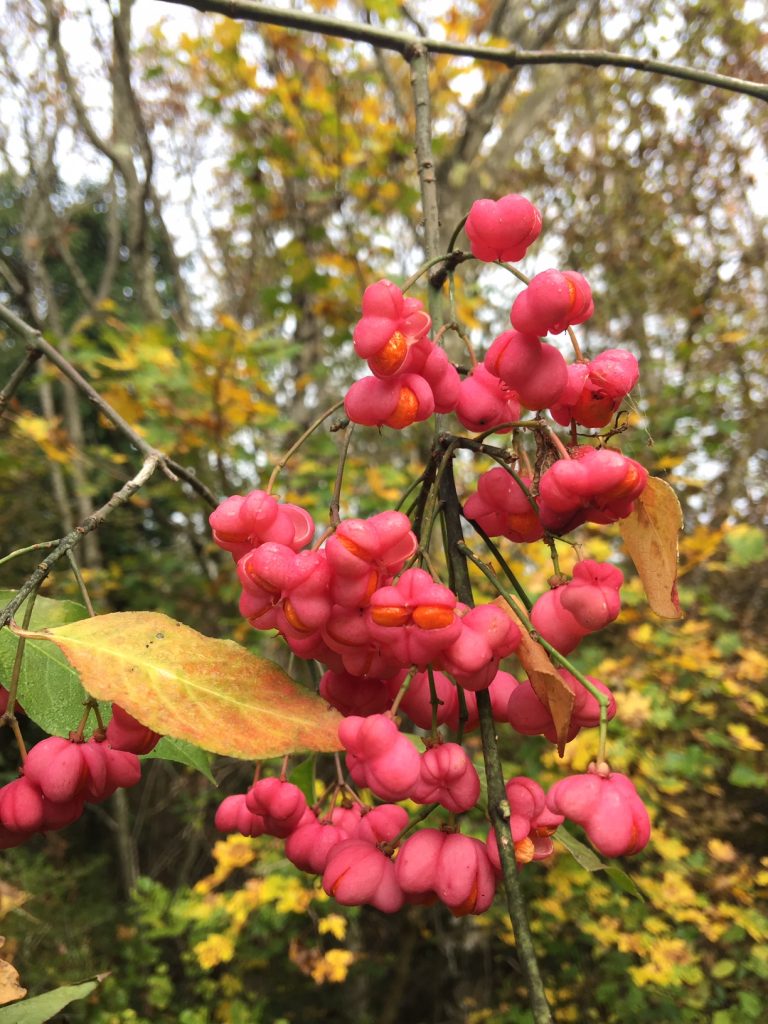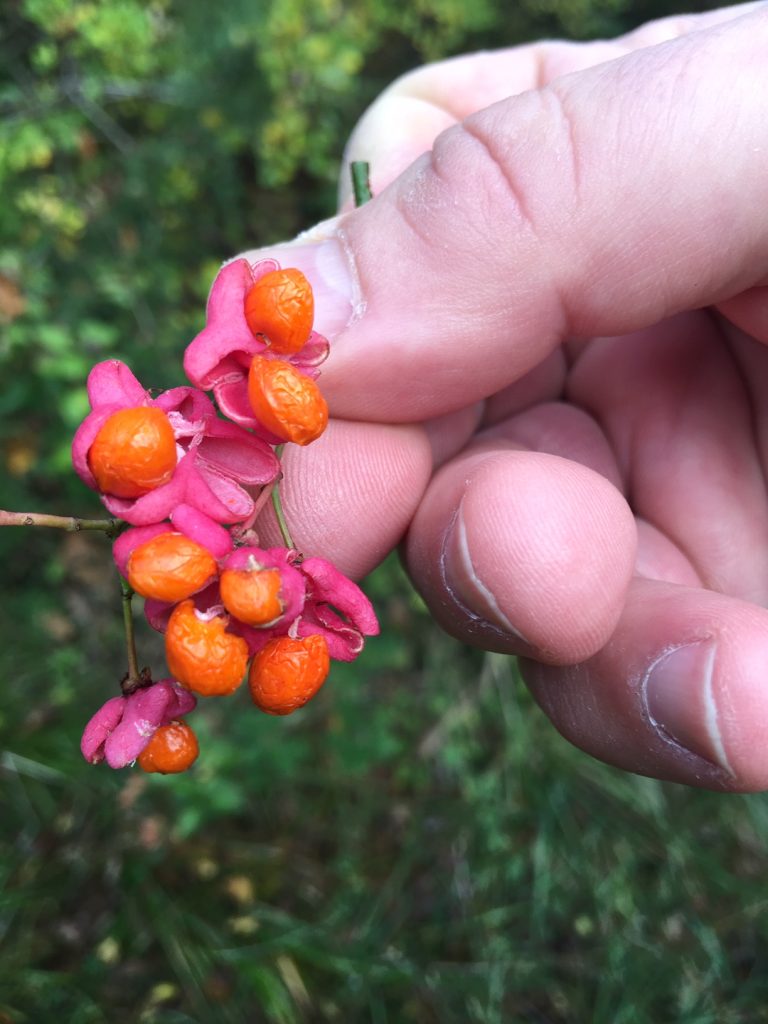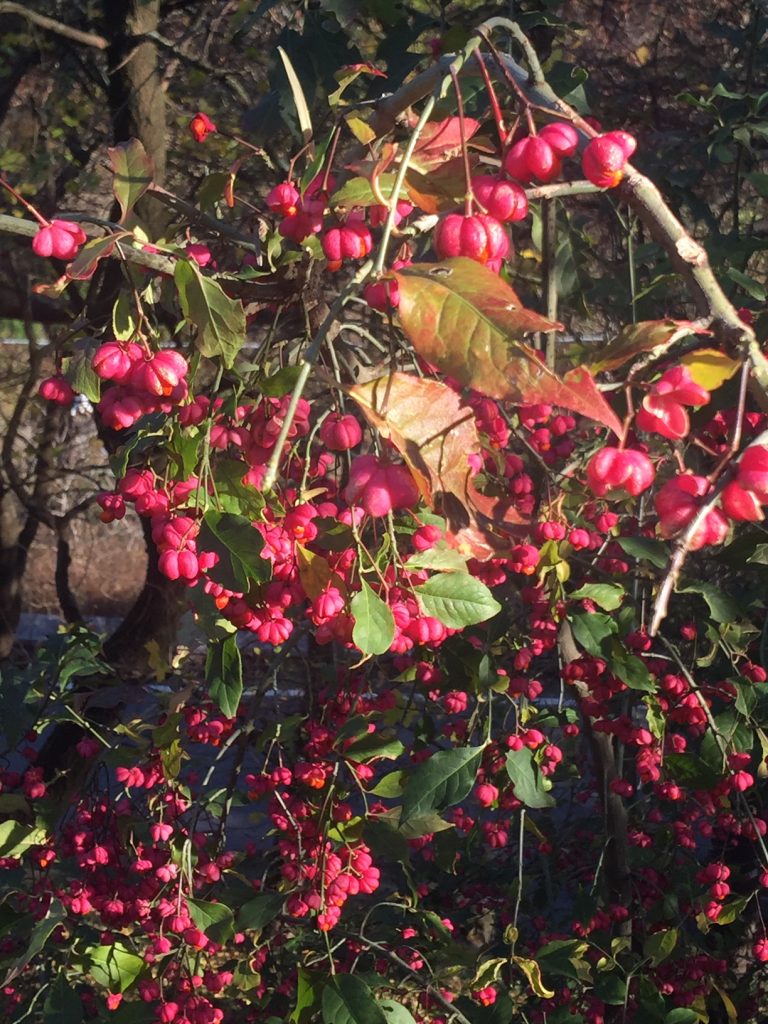by Alessandra Ressa
It is bright pink and orange, and looks completely out of place among the bare branches of trees in winter. If you take a stroll in the woods of Carso in the months of November and December you can’t miss this unusual, plump fruit hanging from its bare shrub.
Often mistaken for a flower due to its shape, color, and size, it is a winter berry and a very poisonous one. It is the beautiful and colorful fruit of Euonymus europaeus, or European spindle, known in Italy as “berretta del prete” (priest’s cap).

The plant is a deciduous small tree or large shrub that grows in woods and hedgerows in many areas of Italy and is quite abundant in our Carso. Its Italian nickname “berretta da/del prete” derives from the shape and color of the fruit, as it is very similar to the headpiece worn by Catholic bishops.

Euonymus europaeus is a species of flowering plant in the family Celastraceae, native to much of Europe, that has also been exported to North America. It feeds on nutrient-rich, chalky, and salt-poor soils. Other names include fusoria, fusanum, ananbeam, and shemshad rasmi (Iran). Historians believe it may have given its name to the ancient Greek settlement of Euonymeia.

The hermaphrodite flowers are produced in late spring and are insect-pollinated; they are rather inconspicuous, small, yellowish green, and grow together in cymes of 3–8. The beautiful capsular fruit however ripens in late autumn, and is red to pink in color and approximately 1–1.5 cm wide. When ripe, between November and December, the four lobes split open to reveal the orange seeds.

Although it grows in the wild, this is a popular ornamental plant in gardens and parks due to its bright pink or purple fruits and attractive autumn coloring, in addition to its resistance to frost and wind. Because of its weather-proof characteristics, it is the perfect ornament for Trieste’s gardens.

European spindle wood is very hard, and can be cut to a sharp point; it was used in the past for making spindles for wool-spinning and for butchers’ skewers. Charcoal for drawing produced from this plant is considered as superior among artists due to its strength and density.
As attractive as it is, however, the fruit is poisonous, containing, amongst other substances, alkaline, theobromine, and caffeine, as well as an extremely bitter terpene. Instances of poisonings are more common in young children, who are attracted to the brightly colored fruits. Ingestion can result in liver and kidney damage and even death.





























